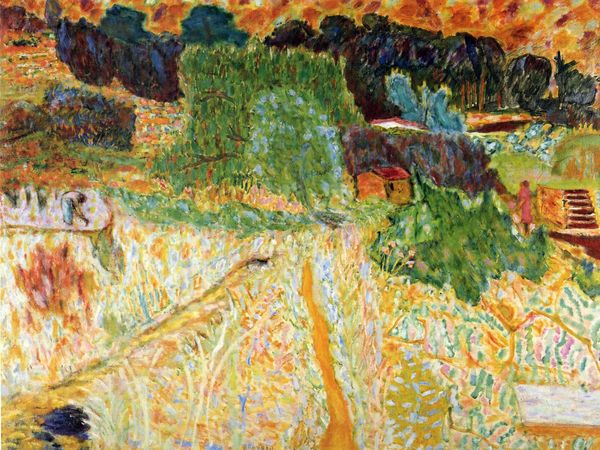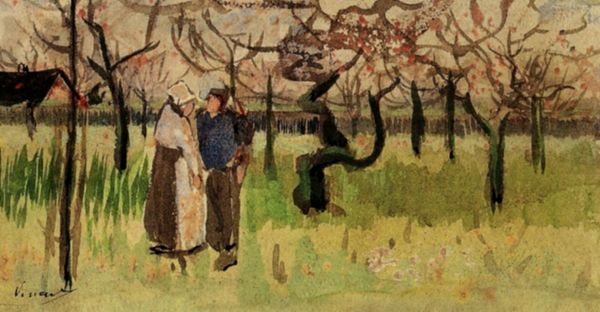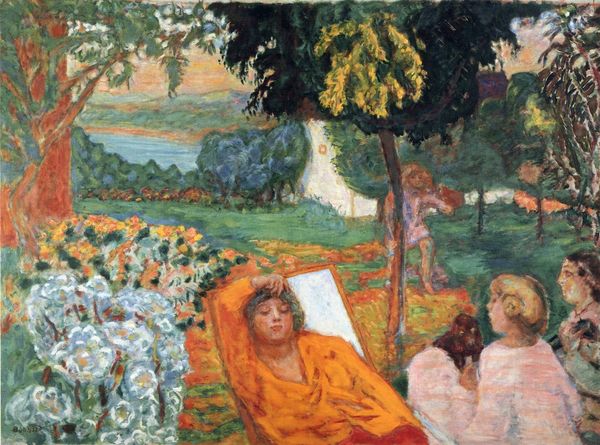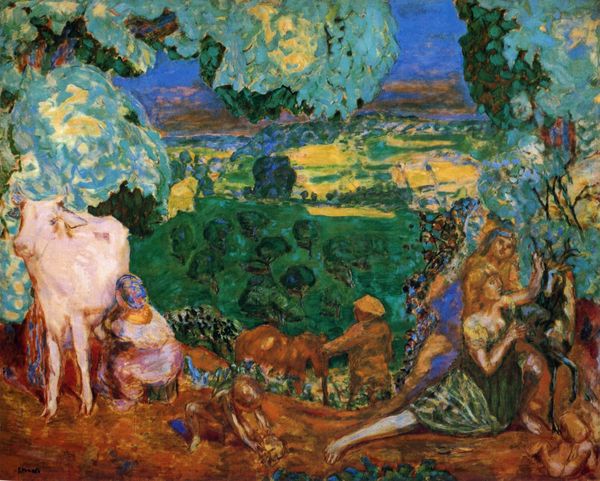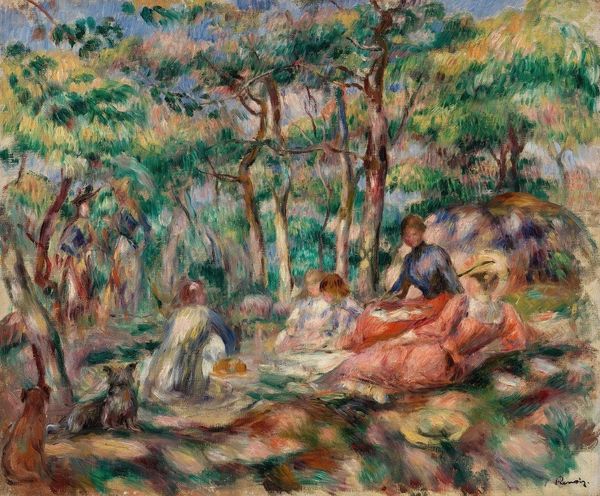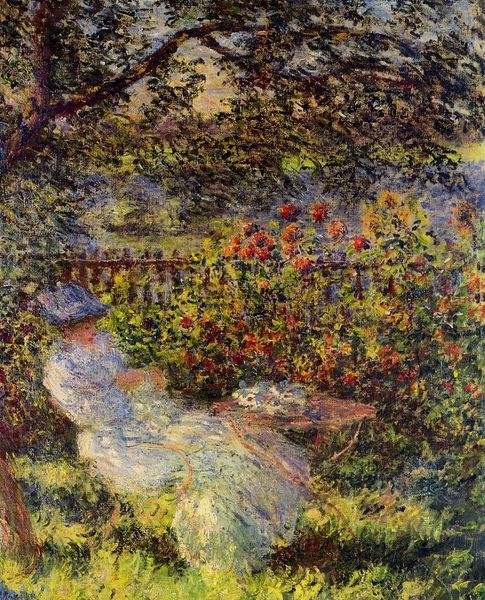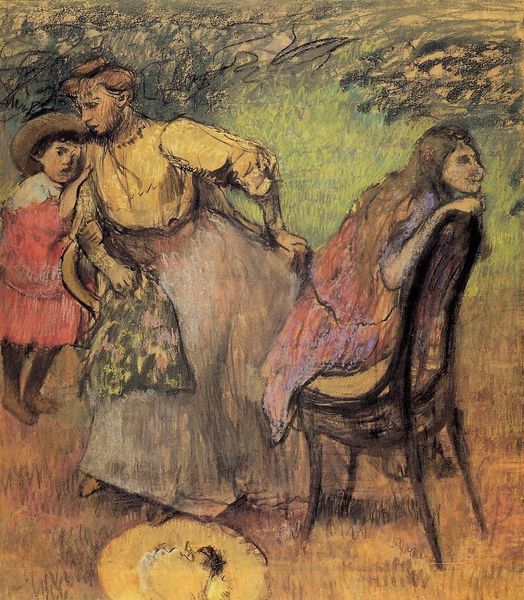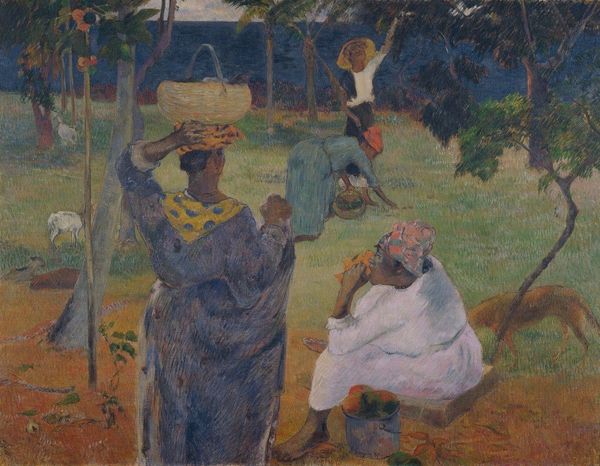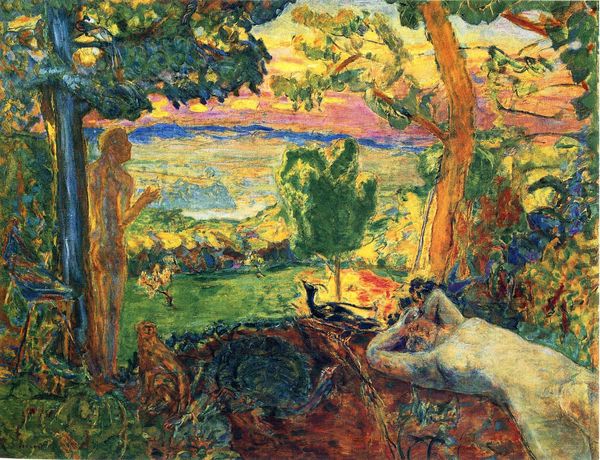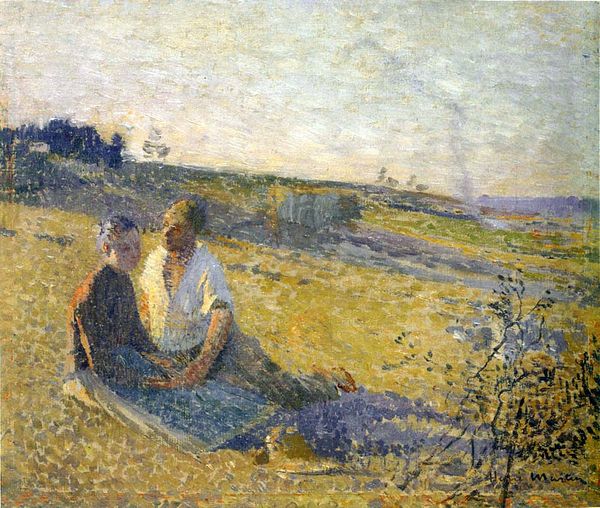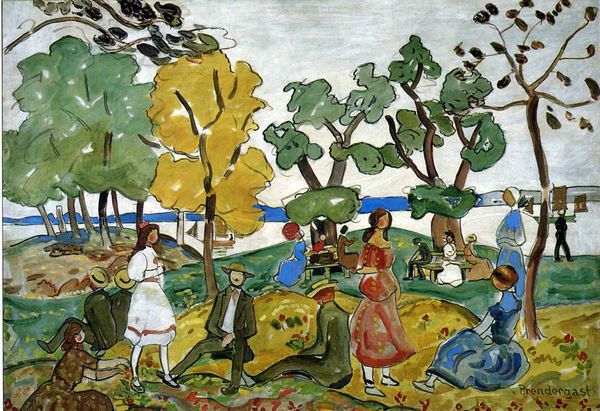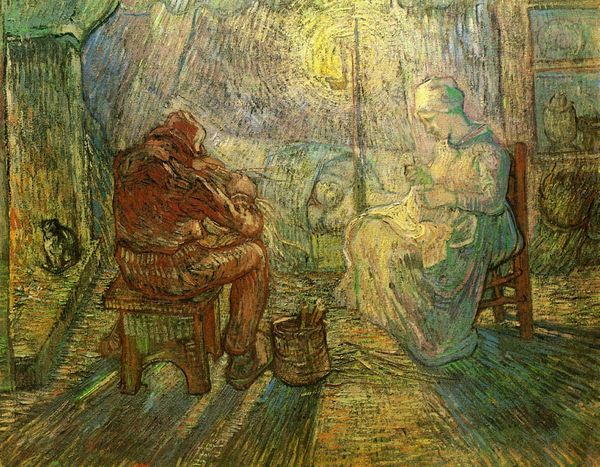
Dimensions: 110 x 127 cm
Copyright: Public domain
Curator: At first glance, it feels languid. Almost hazy. Editor: That's interesting, given its theme. We're standing before Pierre Bonnard's "Jakten," or "The Hunt," created circa 1915. It's an oil on canvas, part of the collection at the Gothenburg Museum of Art. Look closely at Bonnard's distinct post-impressionist brushstrokes and how they suggest rather than define the forms within the landscape. The materiality here seems crucial: thick application, evident strokes—how does that strike you? Curator: It downplays the ‘hunt’ itself, really. Note the seated figure—presumably the hunter—almost merging with the earth, the dog beside him recumbent. Where's the dynamism we might expect? Instead, the material reality of rest is front and center. What’s so revolutionary is how Bonnard democratized painting by embracing such genre paintings as a viable way of thinking about form. How does that read for you? Editor: Absolutely. If you approach this painting as a depiction of leisure, though, tensions rise. The hunter figure you describe could equally be an injured soldier—1915, remember, was the height of the First World War, a global clash rooted in colonial violence and driven by rapidly industrializing weapon manufacturing. Perhaps we can consider this image through a lens of historical and social violence, specifically its intersection with the notion of traditional masculinity. The male subject seemingly escapes from those wartime horrors. It brings complexity. Curator: You are asking about consumption in terms of who is doing it and what those roles do? It is fascinating. And he paints it outdoors, en plein air, which means Bonnard's bringing a relatively novel form of production, industrially-produced paint, into direct dialogue with a very old activity, hunting. That raises questions, doesn't it? The landscape, the very soil, rendered using manufactured substances. Editor: Precisely. Consider the role of women, too—peripheral in the landscape, yet participating in this culture. How can we understand gender roles operating here, structuring access to resources, pleasure, even representation? It isn't just about an idyllic scene; it's about a set of power dynamics coded within leisure itself. Curator: So, while the artwork initially seems soft and carefree, we recognize how it pulls us into larger questions. Editor: Right—it subtly unveils complexities.
Comments
No comments
Be the first to comment and join the conversation on the ultimate creative platform.
